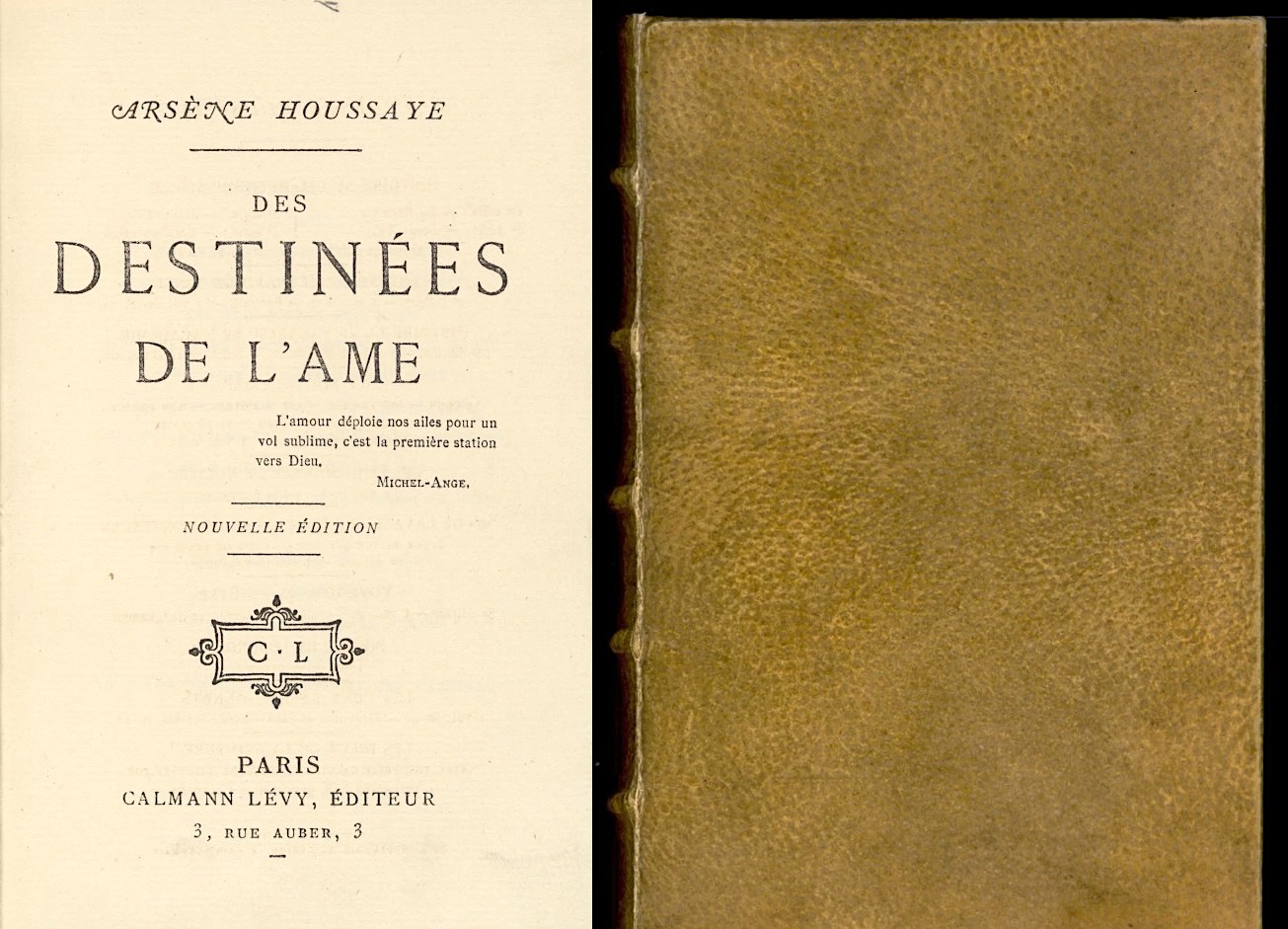This content originally appeared on Open Culture and was authored by Colin Marshall

In June of 2014, Harvard University’s Houghton Library put up a blog post titled “Caveat Lecter,” announcing “good news for fans of anthropodermic bibliopegy, bibliomaniacs, and cannibals alike.” The occasion was the scientific determination that a book in the Houghton’s collection long rumored to have been bound in human skin — the task of whose retrieval once served, they say, as a hazing ritual for student employees — was, indeed, “without a doubt bound in human skin.” What a difference a decade makes: not only has the blog post been deleted, the book itself has been taken out of from circulation in order to have the now-offending binding removed.
“Harvard Library has removed human skin from the binding of a copy of Arsène Houssaye’s book Des destinées de l’âme (1880s),” declares a strenuously apologetic statement issued by the university. “The volume’s first owner, French physician and bibliophile Dr. Ludovic Bouland (1839–1933), bound the book with skin he took without consent from the body of a deceased female patient in a hospital where he worked.” Having been in the collection since 1934, the book was first placed there by John B. Stetson, Jr., “an American diplomat, businessman, and Harvard alumnus” (not to mention an heir to the fortune generated by the eponymous hat).
“Bouland knew that Houssaye had written the book while grieving his wife’s death,” writes Mike Jay in the New York Review of Books, “and felt that this was an appropriate binding for it — ‘a book on the human soul merits that it be given human clothing.’ ” He also “included a note stating that “this book is bound in human skin parchment on which no ornament has been stamped to preserve its elegance.” This copy of Des destinées de l’âme isn’t the only book rumored — or, with the peptide mass fingerprinting (PMF) technology developed over the past decade, confirmed — to have been bound in human skin. “The oldest reputed examples are three 13th-century Bibles held at the Bibliothèque Nationale in France, write the New York Times’ Jennifer Schuessler and Julia Jacobs.
Jay also mentions the especially vivid example of “an 1892 French edition of Edgar Allan Poe’s The Gold Bug, adorned with a skull emblem, is genuine human skin: Poe en peau humaine.” In general, Schuessler and Jacobs note, the largest number of human skin-bound books “date from the Victorian era, the heyday of anatomical collecting, when doctors sometimes had medical treatises and other texts bound in skin from patients or cadavers.” Now that this practice has been retroactively judged to be not just deeply disturbing but officially problematic (to use the vogue term of recent years) it’s up to the anthropodermic-bibliopegy enthusiasts out there to determine whether to put the items in their own collections to the PMF test — or to leave a bit of macabre mystery in the world of antiquarian book-collecting.
Related content:
Old Books Bound in Human Skin Found in Harvard Libraries (and Elsewhere in Boston)
When Medieval Manuscripts Were Recycled & Used to Make the First Printed Books
Behold the Codex Gigas (aka “Devil’s Bible”), the Largest Medieval Manuscript in the World
A Mesmerizing Look at the Making of a Late Medieval Book from Start to Finish
Based in Seoul, Colin Marshall writes and broadcasts on cities, language, and culture. His projects include the Substack newsletter Books on Cities and the book The Stateless City: a Walk through 21st-Century Los Angeles. Follow him on Twitter at @colinmarshall or on Facebook.
This content originally appeared on Open Culture and was authored by Colin Marshall
Colin Marshall | Sciencx (2024-06-12T09:00:07+00:00) Harvard Removes the Human Skin Binding from a Book in Its Collection Since 1934. Retrieved from https://www.scien.cx/2024/06/12/harvard-removes-the-human-skin-binding-from-a-book-in-its-collection-since-1934/
Please log in to upload a file.
There are no updates yet.
Click the Upload button above to add an update.
